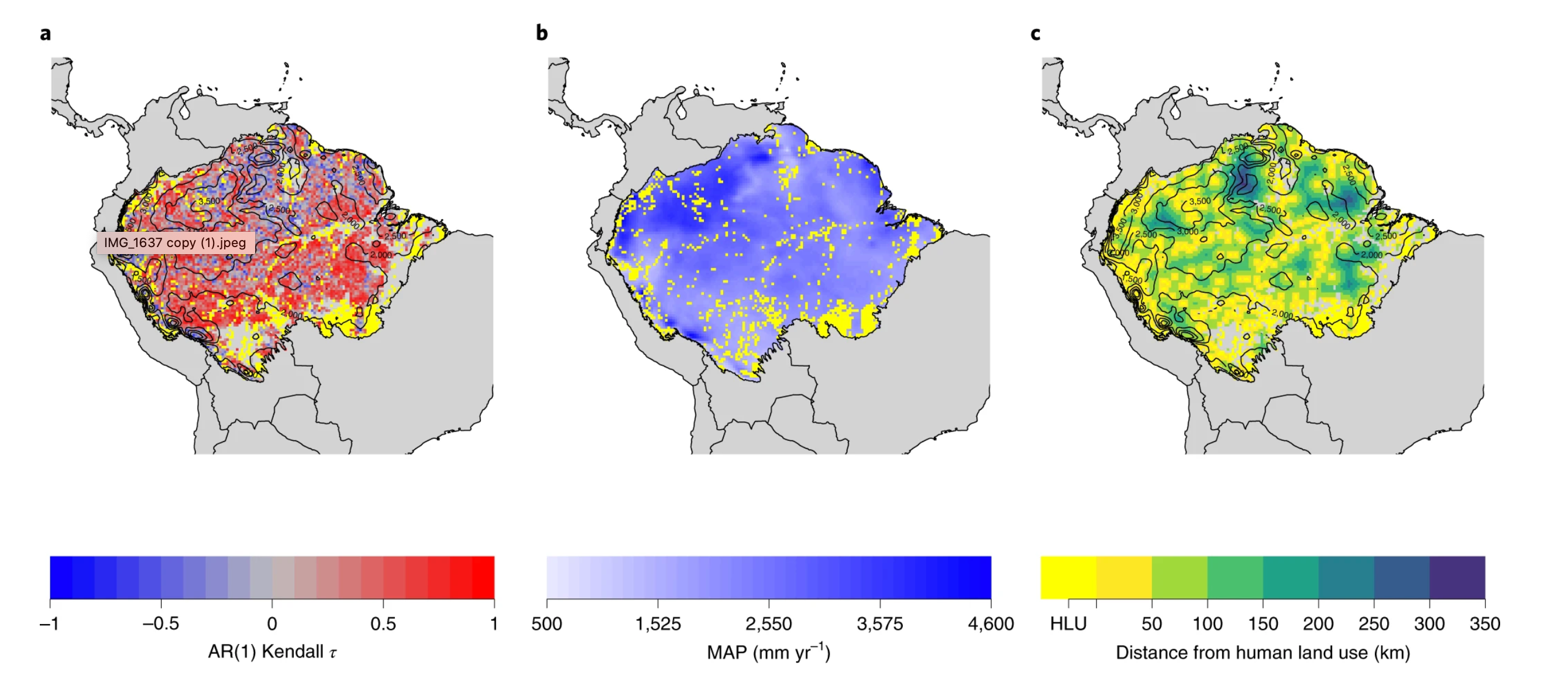Satellites show Amazon rainforest losing its ability to bounce back: Scientists fear a ‘tipping point’
More than three-quarters of the Amazon has seen a decline in its ability to recover from fires and droughts
Your support helps us to tell the story
From reproductive rights to climate change to Big Tech, The Independent is on the ground when the story is developing. Whether it's investigating the financials of Elon Musk's pro-Trump PAC or producing our latest documentary, 'The A Word', which shines a light on the American women fighting for reproductive rights, we know how important it is to parse out the facts from the messaging.
At such a critical moment in US history, we need reporters on the ground. Your donation allows us to keep sending journalists to speak to both sides of the story.
The Independent is trusted by Americans across the entire political spectrum. And unlike many other quality news outlets, we choose not to lock Americans out of our reporting and analysis with paywalls. We believe quality journalism should be available to everyone, paid for by those who can afford it.
Your support makes all the difference.The Amazon rainforest is losing its ability to bounce back from extreme events, raising the spectre that this precious piece of the natural world is racing towards its “tipping point”.
Research published on Monday revealed that over the past two decades, more than 75 per cent of the tropical forest has declined in its ability to recover from extreme events like drought or wildfire.
This deterioration means that the Amazon may soon reach a watershed, triggering mass dieback of trees and flipping the forest to a savanna, scientists say.
So-called climate tipping points are thresholds in Earth’s systems which, when crossed, could lead to cascading effects and irreversible change, for example, with the loss of the Amazon forest or the West Antarctic ice sheet.
“The Amazon rainforest is a highly complex system, so it’s very difficult to predict if and when a tipping point could be reached,” says Dr Chris Boulton, of Exeter’s Global Systems Institute.
However the new study found that the decline in forest resilience is “consistent” with approaching this critical juncture.
The Amazon rainforest is one of the planet’s richest areas of biodiversity. Trees, especially in forests which have been standing for millennia, store carbon and are among our best natural allies in slowing the pace of human-caused climate change.
The new study was carried out by the University of Exeter, the Potsdam Institute for Climate Impact Research (PIK), and the Technical University of Munich. Their paper was published in the journal Nature Climate Change on Monday.
“Deforestation and climate change are likely to be the main drivers of this decline,” said Professor Niklas Boers, of PIK and the Technical University of Munich.
“Resilience is being lost faster in parts of the rainforest that are closer to human activity, as well as those with less rainfall.”
While the climate crisis has not severely impacted the average rainfall in the Amazon, dry seasons are longer and droughts are more frequent and intense. Major droughts in 2005 and 2010 played a significant role in forest decline, the researchers said.

The Amazon is also threatened by an increasing number of wildfires, and widespread deforestation and degradation due to industrial activity.
An estimated 5,000 square miles of Amazon rainforest – a third of the size of Switzerland – was destroyed in 2020-21, according to data from Brazil’s National Institute of Space Research. That was a 22 per cent jump in deforestation over one year, and the highest level in more than 15 years.
While forests act as carbon sinks, the reverse is also true: when they burn, more carbon emissions are spewed into the atmosphere. The Amazon suffered the worst blazes in a decade in 2020.
In the past, researchers have used climate models to predict Amazon tipping points. But satellites now have been orbiting the earth for a long enough period of time that the researchers were able to make real-world observations of the tropical region.
The research team emphasised that there was a distinction between resilience and the average “state” of the rainforest.
“The rainforest can look more or less the same, yet it can be losing resilience – making it slower to recover from a major event like a drought,” said Professor Tim Lenton, director of Exeter’s Global Systems Institute.
“Flipping” the Amazon would be devastating for the planet’s biodiversity and the trajectory of the climate crisis.
A study from Princeton University in 2019 found that if the Amazon turns into savanna it would have significant impact on average global temperature rise, increasing it by 0.25C.
The world has warmed about 1.1C, above preindustrial levels, and the most recent chapter of the United Nations IPCC climate report laid out an ever worsening spiral of deadly heat, extreme weather events and sea-level rise above 1.5C.
“This gives new compelling evidence to support efforts to reverse deforestation and degradation of the Amazon to give it back some resilience against ongoing climate change,” said Prof Lenton.




Join our commenting forum
Join thought-provoking conversations, follow other Independent readers and see their replies
Comments